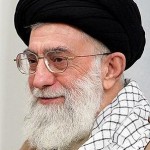Choosing Iran’s president from 6 different shades of black
The world will know which way the Iranian election has gone at roughly half-8 in the morning (Eastern Time) or half-three GMT, on Saturday.
Now that the polls have closed and it is clear that turnout was exceedingly high (with the Interior Ministry needing to extend voting by five hours) we can all wait with bated breath to learn the people’s choice (from among the carefully vetted six candidates who made it on to the ballot).
Western attention has increasingly focussed on Hassan Rouhani, 64, the only cleric contesting the presidential election. He is said to be fluent in English, German, French, Russian and Arabic, and has a law doctorate from Glasgow Caledonian University. He has repeatedly talked a good talk, promising in the Iranian equivalent of the stump speech that he would steer the country towards moderation, reform, free political prisoners, guarantee civil rights and return “dignity to the nation”. He has also raised taboo subjects, such as the nuclear stand-off with world powers, damaging international sanctions, the dire state of the economy and Iran’s international isolation. Most significant of all, he has vowed to restore diplomatic relations with the Great Satan, the United States.
The West sees Mr Rouhani as a “cautious reformer”, the most moderate of a severely restricted field. But it’s worth noting that Mr Rouhani himself doesn’t describe himself as a reformer – that would probably spell death to any presidential ambitions in 21st century Iran. In a sense, an Iranian presidential election is choice between different shades of black and it is a little like picking a pope. You can be sure he will always be male, always anti-abortion and fairly conservative.
But perhaps Mr Rouhani is a lighter shade of black?


